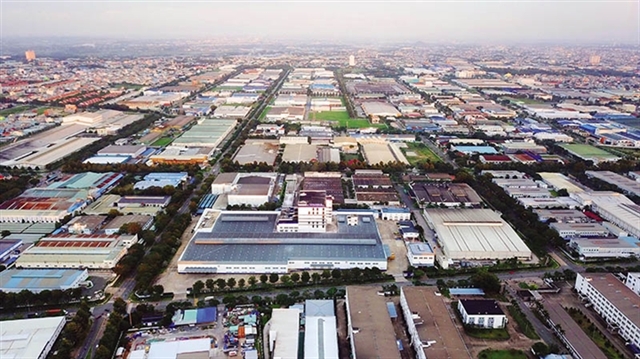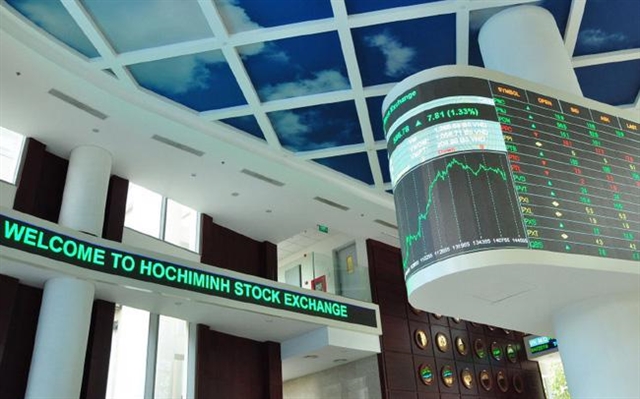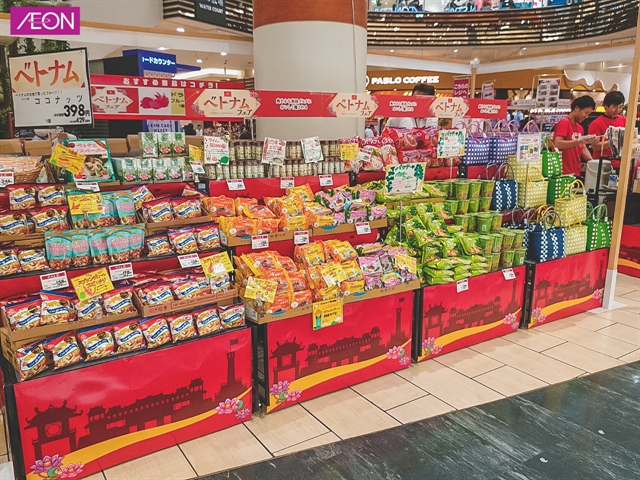Compiled by Thiên Lý
E-logistics is a rather new concept even to the logistics industry in Việt Nam.
The increasingly intense competition in all sectors due to globalisation means companies have to reduce costs or perish, and to cut costs they are adopting new strategies like supply chain management and e-logistics.
According to AMR Research, e-logistics helps reduce logistics costs by 10 per cent. That is why behemoths like Dell, Compaq and Hewlett Packard have embraced it.
But e-logistics however face many challenges in developing markets like economic and educational barriers, lack of infrastructure, security and trust and privacy, channel conflicts, security problems, global terrorism, and geographical barriers.
As one of the fastest growing e-commerce markets in the world, Việt Nam is considered a highly promising market for e-logistics.
Its e-commerce is worth US$13.2 billion and growing at 15 per cent annually. The boom in online shopping and home delivery in recent years, especially with the advent of COVID-19, has created a huge opportunity for e-logistics operators, analysts said.
Logistics costs now make up 10 per cent of turnover in many sectors, meaning e-logistics activities could potentially be worth billions of dollars in the coming time, they pointed out.
They said it is imperative for logistics enterprises to get a full understanding of the advantages of and the urgent need for digital transformation since most of them have been slow in embracing it.
If they speed up their digital transformation they would enhance their competitiveness and be able to penetrate overseas markets after the pandemic ends, they said.
High logistics costs affect the competitiveness of goods and services, thus posing an obstacle for Vietnamese businesses seeking to enter new markets.
The country’s logistics costs as a ratio of GDP are six percentage points higher than Thailand’s, seven percentage points higher than China’s and 12 percentage points higher than Malaysia’s.
They are around 20 per cent of GDP while globally they range between 9 per cent and 14 per cent.
High costs of e-logistics
But experts said the Vietnamese logistics industry would find it very difficult to exploit the advantages of e-logistics since technology plays an important role but is high-priced.
A company seeking to foray into e-logistics services supply chain needs to invest millions of dollars into automatic commodity classification systems, which are able to process millions of orders in multiple categories and to many different delivery destinations but still ensure deliveries are done to the right customers and at the right time.
They also need some vital software solutions that cost hundreds of billions of đồng.
An order management system manages the lifecycle of an order.
A warehouse management system is a software solution that collates a business’ entire inventory and manages supply chain fulfilment operations from the distribution center to store shelves.
A transportation management system serves as a logistics platform that uses technology to help businesses plan, execute and optimise the physical movement of goods and makes sure shipments are compliant and have proper documentation.
Enterprise resources planning (ERP) is software that organisations use to manage day-to-day business activities such as accounting, procurement, project management, risk management and compliance, and supply chain operations.
The huge costs needed to develop such IT infrastructure create a financial barrier for local logistics firms, especially small and medium-sized enterprises (SMEs).
Another big challenge for the firms, especially SMEs, to surmount is the need to have a network of branches, agents and warehouses across the country.
E-logistics also requires quality human resources who are able to adapt to digital technologies.
Some industry insiders concurred with the analysts, admitting that lack of financial capacity, human resources and suitable technologies prevent Vietnamese logistics companies from adopting digital transformation.
Only some global logistics management software is used in Việt Nam, making it difficult for domestic firms to identify optimal ones, they said.
Thus, around 40 per cent of the software used for international forwarding management, warehouse management, transport management, electronic data exchange, and customs declaration remains very basic.
Besides, logistics companies’managers are not confident about data and payment security and so hesitate to go digital.
According to the Việt Nam Logistics Business Association, not many firms adopt integrated solutions in their logistics and supply chains.
The country now has around 30,000 businesses providing logistics services, 90 per cent of which are SMEs with a capital of less VNĐ10 billion (some $434,780) and another 5 per cent with VNĐ10-20 billion.
Only a few large companies can therefore meet the conditions for participating in e-logistics supply chains, including multinationals DHL and Fedex, Viettel Post and Vietnam Post.
Analysts said with e-commerce growing rapidly the Government and logistics firms need to soon have action programmes to sustain Vietnamese logistics firms’s market shares right in the domestic market.
Preferential policies in terms of taxes, land rentals and interest on loans are needed to enable domestic logistics firms to build warehouses and commodity classification systems so that they could compete with large foreign rivals.
Vietnam Post and Viettel Post have a competitive advantage in the form of delivery networks with large warehouses across the country, and would be able to compete with foreign rivals if they are more proactive with regard to technology, human resource training and improving corporate governance, they said.
They also said the Government should encourage leading IT firms to develop e-logistics administration software and sell them to logistics SMEs at reasonable costs, thus enabling them to enter e-logistics supply chains.
They said logistics SMEs that cannot invest in technology should focus on niche markets with small orders and single products to serve retail enterprises and sellers on social networks and mobile devices.
By this way they are likely to survive since the quality requirements from such customers are not too high for them to meet, they said.
SMEs should learn from the experience of large logistics players who have achieved digital transformation, and meanwhile should start getting acquainted with e-contracts, digital payment of taxes and digitisation of all business activities, they suggested.
To achieve digitial transformation, they must work closely with industry business groups and universities to retrain their human resources to operate digital logistics systems, they added. VNS































